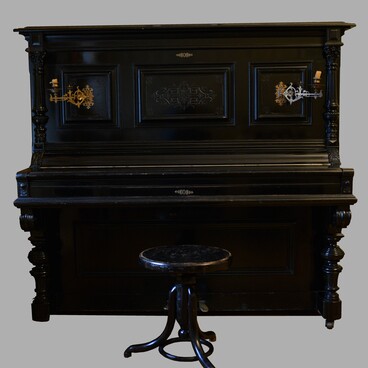A key milestone in the history of Ossetian literature and painting was the work of the outstanding public figure, poet, artist, writer, and publicist Kosta Khetagurov. He lived and worked at the turn of the 19th and 20th centuries, when the rapid transition from the patriarchal-tribal system to capitalism radically changed all aspects of life for the population of Terek Oblast. The philologist Vasiliy Abaev noted: ‘Khetagurov’s significanceis not only that he awakened the people’s national consciousness. His great merit is that he gave this consciousness a certain ideological orientation, ’ and continued: ‘Any nation, to come into dignity among the other nations, needs people who could be their national symbol! ’
Kosta Khetagurov repeatedly addressed the topic of religion in his works. The Christian question at home always occupied the writer: he created a whole series of articles on parochial schools in Ossetia and the Ardon theological Seminary. He also painted Christian churches and made paintings on religious subjects.
Khetagurov helped restore the paintings and interior of the cathedral in Alagir. It was his brush that painted the thematic compositions on the upper sections of the cathedral’s southern, northern and eastern walls, as well as artistic ornaments on its arches and pillars.
As an adult, Khetagurov got the idea to translate the gospel into the Ossetian language. He hoped that this republication of the holy book would help secure the Ossetian alphabet, “which, in its simplicity and grace, will undoubtedly make it possible to read the Holy Scriptures fluently and easily understandable”.
Kosta Khetagurov made his final painting, “Prayer for the Grail” or “Christ in the Garden of Gethsemane”, when he was seriously ill, but didn’t manage to complete it. The canvas, made in red and blue tones, was kept in Nikolai (Niko) Khetagurov’s home for a long time, but Kosta’s sister Olga Levanovna took it out and put it in the photography pavilion on the corner of Dzhanaeva Street and Khetagurova Street. Later, ‘Prayer for the Grail’ was included in an art museum’s exhibit.
Kosta Khetagurov repeatedly addressed the topic of religion in his works. The Christian question at home always occupied the writer: he created a whole series of articles on parochial schools in Ossetia and the Ardon theological Seminary. He also painted Christian churches and made paintings on religious subjects.
Khetagurov helped restore the paintings and interior of the cathedral in Alagir. It was his brush that painted the thematic compositions on the upper sections of the cathedral’s southern, northern and eastern walls, as well as artistic ornaments on its arches and pillars.
As an adult, Khetagurov got the idea to translate the gospel into the Ossetian language. He hoped that this republication of the holy book would help secure the Ossetian alphabet, “which, in its simplicity and grace, will undoubtedly make it possible to read the Holy Scriptures fluently and easily understandable”.
Kosta Khetagurov made his final painting, “Prayer for the Grail” or “Christ in the Garden of Gethsemane”, when he was seriously ill, but didn’t manage to complete it. The canvas, made in red and blue tones, was kept in Nikolai (Niko) Khetagurov’s home for a long time, but Kosta’s sister Olga Levanovna took it out and put it in the photography pavilion on the corner of Dzhanaeva Street and Khetagurova Street. Later, ‘Prayer for the Grail’ was included in an art museum’s exhibit.



